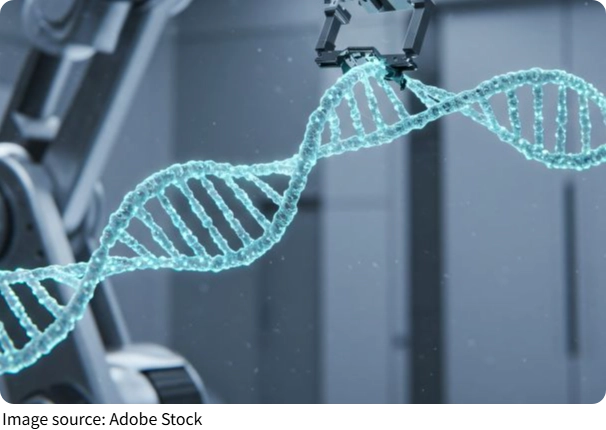Iron's Evolution

Iron is often regarded as one of the most significant elements in both the development of life on Earth and the Earth's formation itself.
But how did this common metal become such an essential component of life as we know it? This article explores iron's role in Earth's history, its critical importance in the emergence of life, and how it continues to shape the world we live in today.
Iron: The Essential Element of Early Life
From the moment Earth formed, iron was present in its molten core and throughout its surface. As the planet cooled, iron combined with oxygen to form iron oxide, creating large deposits of iron in the Earth's crust. While iron was essential for the planet's geochemistry, it also played a crucial role in the origin of life itself.
During Earth's early days, roughly 4 billion years ago, the planet had a much different atmosphere and ocean chemistry compared to today. With little oxygen, the oceans were rich in iron in its ferrous (Fe²⁺) state. This allowed iron to be the primary metal in biological processes, crucial to the first chemical reactions that led to life. As life began in Earth's oceans, early organisms used iron to catalyze chemical reactions essential for metabolism, creating the foundation of life as we know it.
Iron's Role in Prebiotic Chemistry
The connection between iron and the origins of life goes beyond its presence in early environments. Scientists now understand that iron played a key role in prebiotic chemistry, the process through which simple molecules evolved into the first forms of life.
Iron-sulfur clusters (Fe-S clusters) were some of the earliest molecular structures formed in ancient Earth's oceans. These clusters were the building blocks for enzymes, proteins that catalyze chemical reactions in all living organisms today. By conducting electron transfer, iron-sulfur clusters allowed for early forms of metabolism that enabled the first living organisms to survive and grow.
The abundance of iron in Earth's early oceans meant that it was the dominant metal involved in these reactions. This made iron an essential part of early biochemistry, driving the processes that eventually led to more complex life forms. Over time, as organisms developed more sophisticated metabolic processes, iron remained at the heart of these biochemical systems.
The Great Oxidation Event: Iron's Decline and the Rise of Other Metals
While iron was dominant in early Earth life, this changed around 2.4 billion years ago with the Great Oxidation Event (GOE), a dramatic shift in Earth's atmosphere. This event marked the first appearance of significant levels of oxygen in Earth's atmosphere, a change that would forever alter the planet's chemical dynamics.
With the increase of oxygen, ferrous iron (Fe²⁺) in the oceans began to oxidize, turning into insoluble ferric iron (Fe³⁺). This greatly reduced the availability of iron in its usable form, signaling a major shift in the metals that life could rely on. At the same time, other metals like copper, zinc, and manganese began to replace iron in many biochemical processes, such as oxygen-dependent respiration and photosynthesis.
The rise of these metals facilitated the diversification of life forms. Organisms adapted to this new environment by evolving mechanisms to incorporate other metals into their biochemistry, ensuring the survival and development of life even as iron became scarcer.
Iron in Modern Biology
Although iron's abundance in the environment decreased over time, it remains a cornerstone of biological processes in all known life. Iron plays a critical role in respiration, metabolism, and oxygen transport. Hemoglobin, the protein in red blood cells that carries oxygen, is one of the most famous examples of iron's role in modern biology. It allows animals, including humans, to survive in an oxygen-rich atmosphere.
Additionally, iron continues to play a vital role in cellular processes such as DNA synthesis, energy production, and the synthesis of neurotransmitters. It is a key component of enzymes that support various biochemical reactions necessary for life. In this way, iron's evolutionary journey from being an abundant resource to a critical, though scarce, element illustrates its importance across all stages of life's development.

The Legacy of Iron in Life's Evolution
Iron's story is one of profound significance. From its earliest days, when it shaped Earth's formation, to its pivotal role in the origin of life, iron has remained at the core of life on Earth. It was the first metal to be harnessed by early organisms, and even today, it is essential for life's survival. As Earth transitioned through significant changes like the Great Oxidation Event, iron's importance never waned, though its role was adapted and refined.
In conclusion, iron was the catalyst for the evolution of life, its legacy still felt in every living organism today. Understanding the evolution of iron not only illuminates the history of life on Earth but also gives us insight into how all elements in our environment interact to support life.
We hope you enjoyed this exploration of iron's evolutionary journey! Have you ever thought about how the elements around us helped shape life? Let us know your thoughts in the comments!
The Evolution of the Iron Age: A Complete Timeline 1200 to 500 B.C.E | Documentary
Video by EarlyHumans
-
 Sun, Salmon & SkinGlow From Within: 2 Delicious Salmon Recipes That Will Boost Your Skin’s Sun Protection!
Sun, Salmon & SkinGlow From Within: 2 Delicious Salmon Recipes That Will Boost Your Skin’s Sun Protection! -
 The Wedding Dress StoryThe Timeless Transformation of Wedding Dresses: A Journey From Ancient Rome to Modern Runways
The Wedding Dress StoryThe Timeless Transformation of Wedding Dresses: A Journey From Ancient Rome to Modern Runways -
 The Bear's SymbolismThe Untold Power of Bears: Why They’ve Captivated Humans for Centuries!
The Bear's SymbolismThe Untold Power of Bears: Why They’ve Captivated Humans for Centuries!